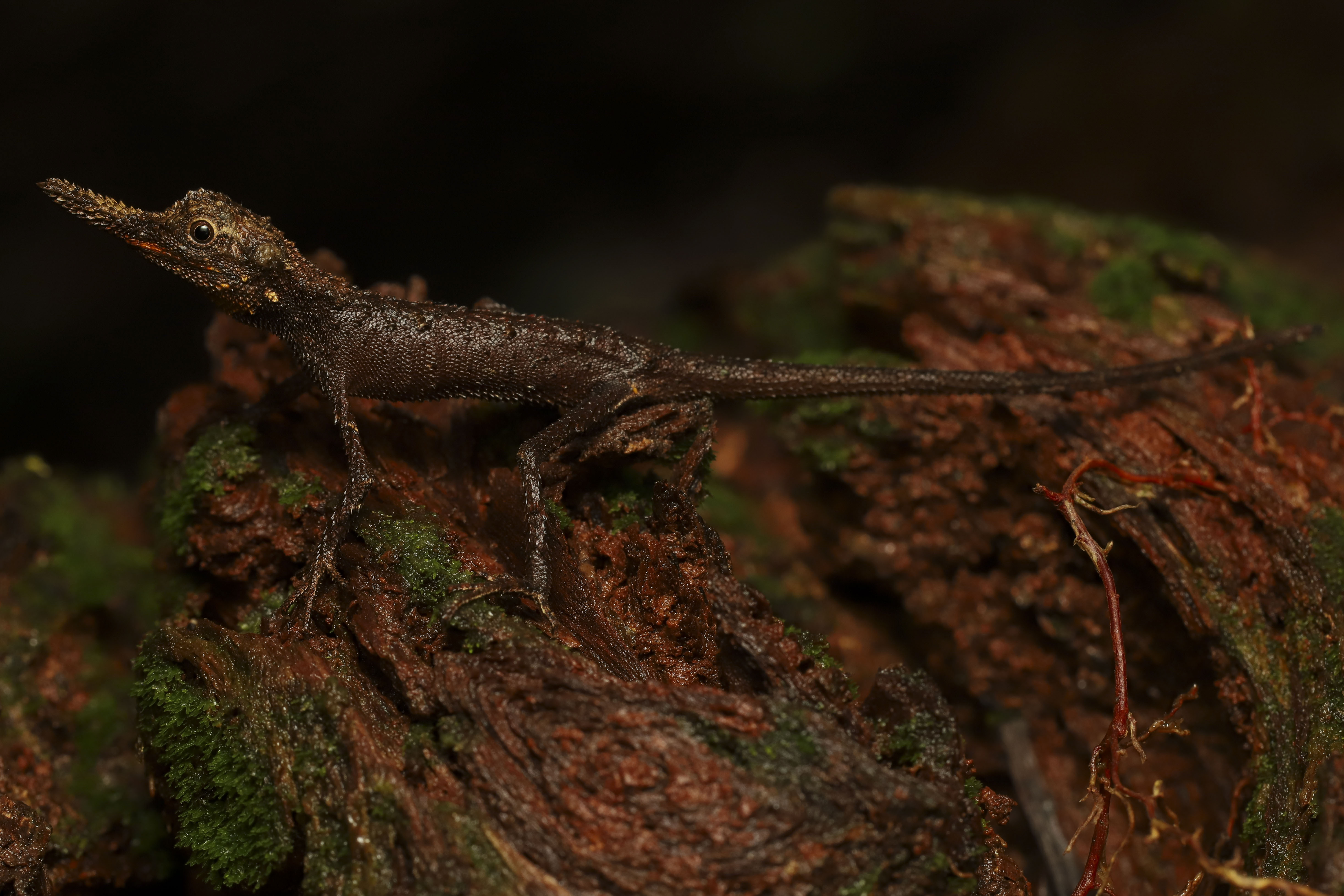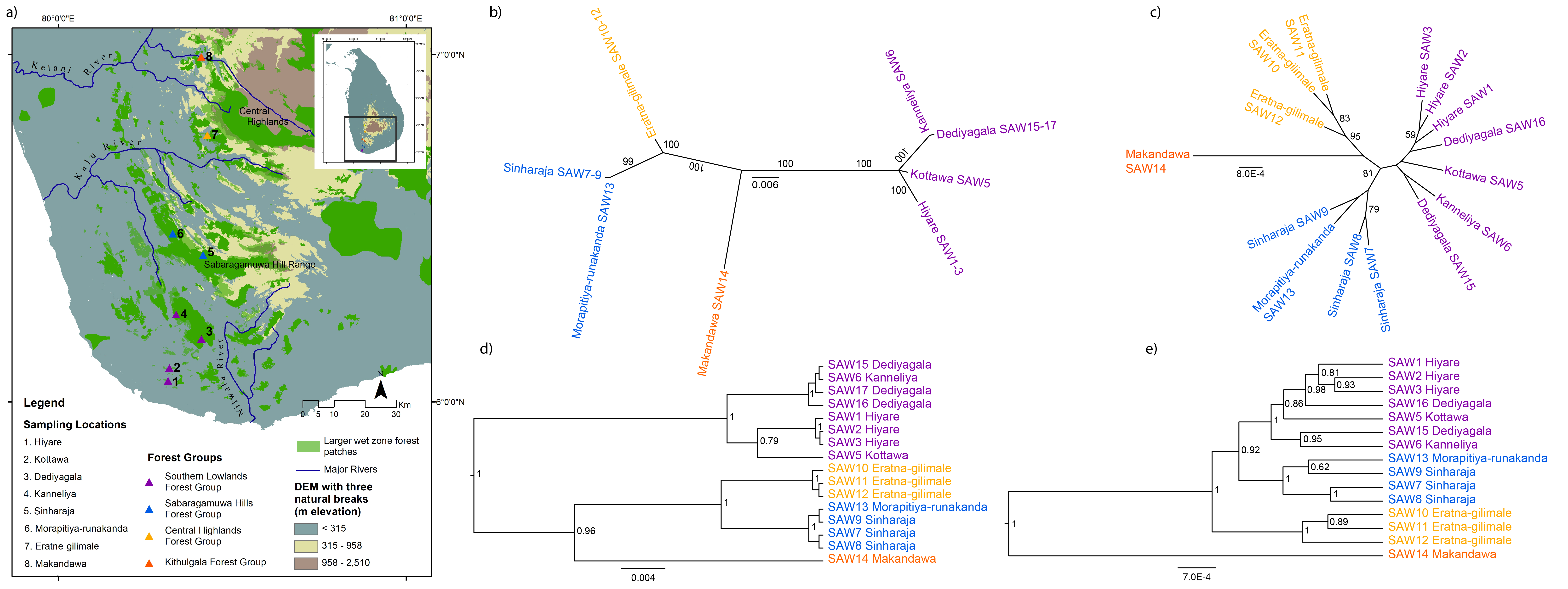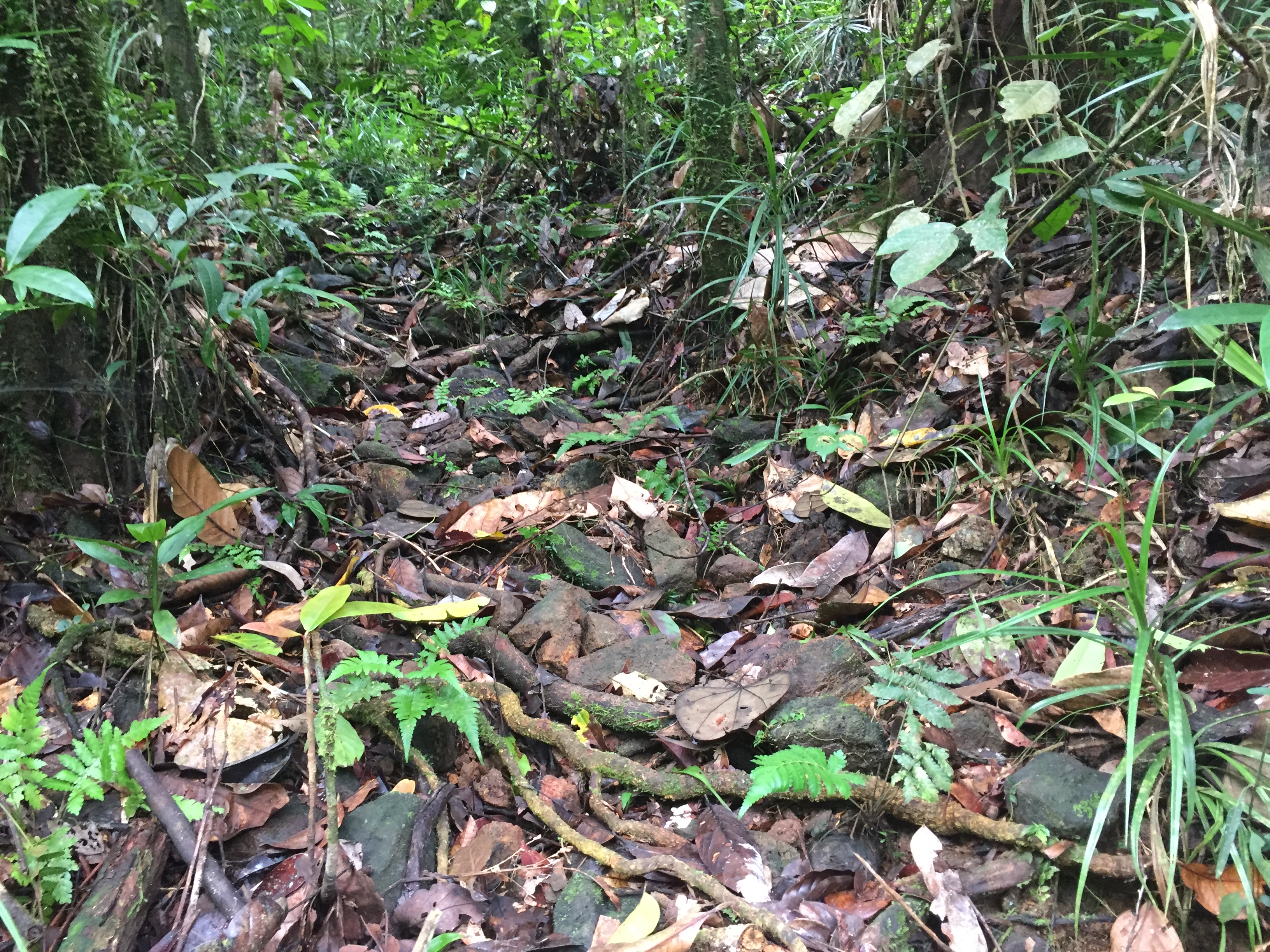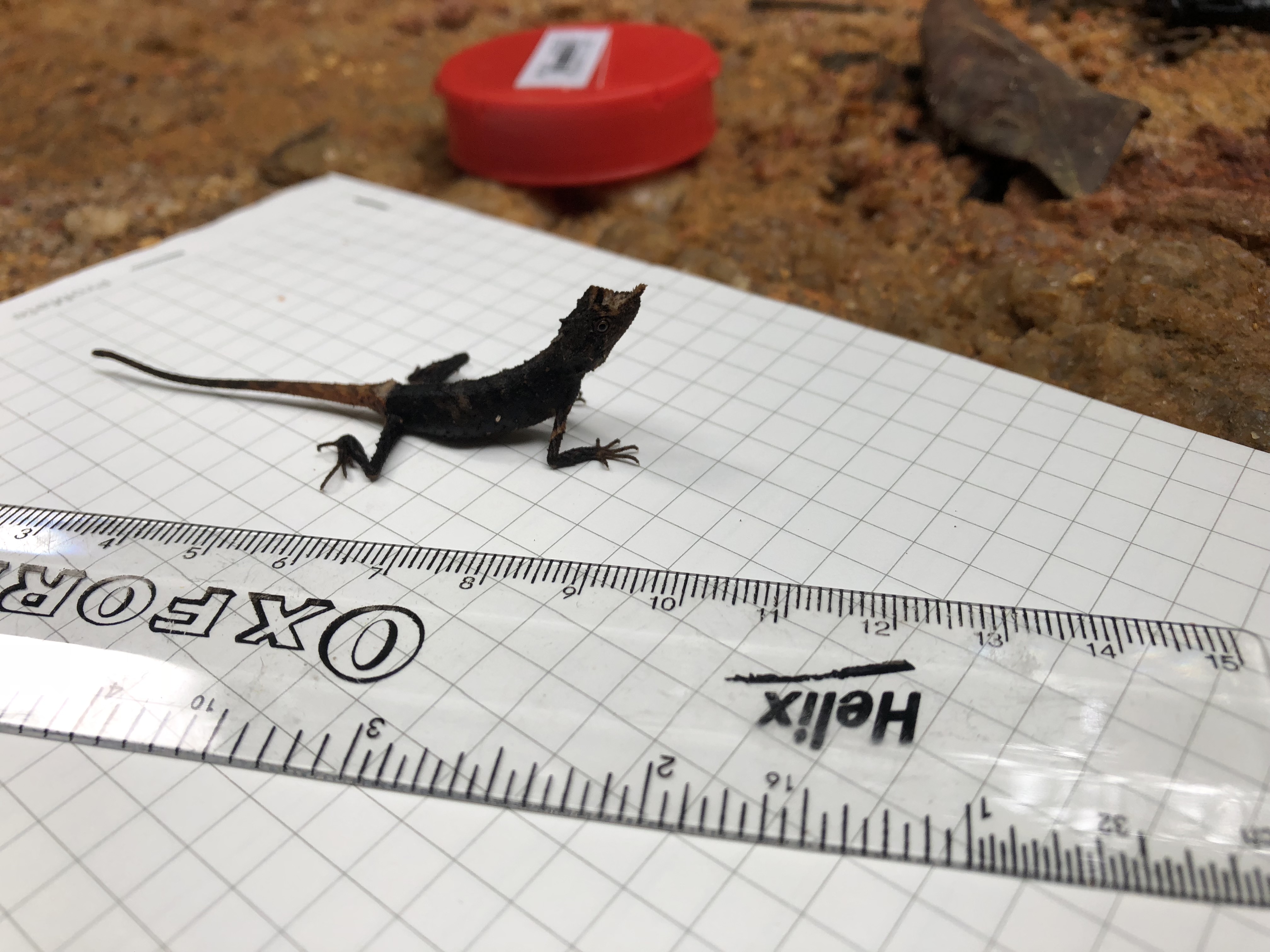
Sri Lanka is a biodiversity hotspot and a Global 200 Ecoregion.
Much of this unique biodiversity is concentrated in the lowland and montane rainforests.
Colonial plantation practices have led to large scale commercial plantations, causing rampant habitat fragmentation in the rainforest ecoregion. As a result, many of the unique species restricted to this ecosystem are likely threatened by population isolation.
We used genetic and next-generation sequencing to characterize population structure and phylogenetic relationships of an endangered, endemic Sri Lankan rough-nosed horned lizard (Ceratophora aspera). Both tree and non-tree based methods show evidence of strong population structure with four groups: 2 submontane and 2 lowland forest groups.
Our results indicate that the formation of rivers during the Miocene or Pliocene may have caused the first divergence. Restriction of rainforest habitat during interpluvial season may have caused divergences during the Pleistocene. Results from this study were used to classify the rough-nosed horned under CITES Appendix II.
This was an undergraduate research project in the Leaché lab at the University of Washington.
See publication
Feature for the University of Washington, Burke Museum: Tracking elusive lizards in Sri Lanka
Feature in Mongabay: Forest fragmentation split up this lizard’s population. It’s no longer the same


